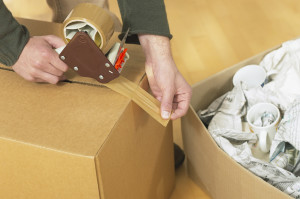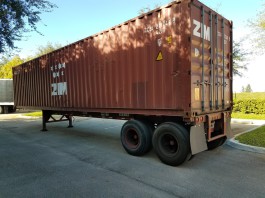Self packing for Moving International
Self-Packing Guide for Overseas Moving
Preparing for an international move can be an exciting but challenging task, especially if you choose to self-pack your belongings. At East Coast Shipping, we
understand the importance of providing guidance and resources to make your self-packing experience as smooth as possible. This page offers valuable instructions and tips on preparing and packing for
your overseas move. Additionally, we provide a list of recommended locations where you can purchase packing materials.
Instructions for Preparing and Packing:
- Create an Inventory: Start by making a comprehensive inventory of all the items you plan to pack. This will help you stay organized throughout the packing process and will be essential for customs purposes. Inventory instructions
- Research Customs Regulations: Familiarize yourself with the customs regulations and restrictions of your destination country. This will ensure you comply with any
specific packing requirements and avoid any issues during customs clearance.
- Purchase Packing Materials: Visit the following recommended locations to purchase high-quality packing materials:
- U-Haul
- Home Depot
- Moving boxes & supplies
- Uline.com
- Packing Essentials: Gather the necessary packing materials, including:
- Sturdy moving boxes in various sizes
- Bubble wrap or packing peanuts for cushioning
- Packing paper or foam sheets for fragile items
- Packing tape and a tape dispenser
- Labels, markers, and stickers for labeling boxes
- Furniture blankets or pads for protection
- Plastic wrap or stretch film for securing furniture and other large items
- Pack Methodically: Follow these packing tips to ensure your belongings are properly protected:
- Start with non-essential items and pack them first.
- Clearly label each box with its contents and destination room.
- Use bubble wrap or packing paper to cushion fragile items.
- Fill any empty spaces in boxes with packing peanuts or crumpled paper to prevent shifting.
- Disassemble furniture, if possible, and wrap each piece in furniture blankets or pads.
- Seal all boxes securely with packing tape to prevent them from opening during transit.
- Make sure boxes are packed full, if its not it may collapse on the pallet causing damage to other items.
- Pack heavier items like books or files in smaller thick book boxes and dont overpack heavy items into large boxes.
- Consider Special Items: For valuable or delicate items such as artwork, antiques, or electronics, consider seeking professional packing assistance or investing in specialized packing materials to ensure their safe transportation.
- Take Inventory and Photos: Before sealing each box, create an inventory list and take photos of the contents. This will help with unpacking and serve as documentation for insurance purposes.
- Label and Document: Clearly mark boxes with your name, destination address, and contact information. Keep a separate document or spreadsheet with box numbers and their corresponding contents for easy reference.
- Plan for Customs: Research any required customs forms or documents specific to your destination country. Ensure you have all necessary paperwork properly completed and easily accessible for customs inspections.
- Shipping Arrangements: Once you have packed your belongings, contact East Coast Shipping to make shipping arrangements. We will guide you through the process and
assist with the necessary documentation.
Remember, self-packing requires careful planning and attention to detail. If you have any questions or need further assistance, our team at East Coast Shipping is here to help.
For self-packing customers, it's essential to provide a clear list of items that require special attention or are restricted, such as lithium batteries. Here are some
items to include in the warning for customers packing their own boxes:
1. Lithium Batteries
- Devices containing lithium-ion or lithium-metal batteries, such as laptops, smartphones, power tools, and electric scooters, need to be declared. Many countries have strict regulations for transporting these items due to the risk of fire.
2. Hazardous Materials
- Items classified as hazardous, including but not limited to:
- Paints, varnishes, and stains
- Cleaning chemicals and bleach
- Aerosols (e.g., spray paint, deodorants)
- Pesticides and herbicides
- Pool chemicals
- Fire extinguishers Customers should be informed that these items are often prohibited in shipments or need to be packed and declared properly.
3. Flammable Items
- Examples include matches, lighters, propane tanks, and gasoline-powered tools. Flammable liquids like kerosene, lighter fluid, and alcohol-based products should also be mentioned.
4. Pressurized Containers
- Items like aerosol cans, CO2 cartridges, and spray cans can be dangerous when transported due to pressure buildup during transit.
5. Perishable Items
- Food items, particularly perishables, should not be packed. In some countries, even non-perishable foodstuffs may require special documentation for customs.
6. Sharp Objects
- Any sharp items such as knives, scissors, or tools should be securely packed and labeled to prevent injury during handling.
7. Valuables
- Customers should avoid packing valuables like cash, jewelry, or important documents. They should be transported personally or using secure courier services.
8. Firearms, Ammunition, and Weapons
- Firearms and ammunition are often restricted and should be declared. Any type of weapon, including pepper spray and knives, may also be subject to regulation depending on the destination country.
9. Liquids
- Customers should avoid packing liquids that could leak and cause damage to other items. Any liquids packed should be sealed in waterproof containers and declared. Keep in mind if anything leaks inside the container it can cause mold to your items during the journey.
10. Items Requiring Permits
- Plants, seeds, and certain animal products may require permits for international transport. It's important that customers declare these items in advance.
11. Restricted or Prohibited Items by Destination
- Each country may have specific regulations, check your countries regulations to make sure you are not shipping any items that may be restricted or prohibited. Country Guide for customs regulations
Loading a Shipping Container for Overseas Moving – Step-by-Step Guide
Self-loading a shipping container for an international move can save money, but it requires careful planning and proper technique to protect your
belongings during the journey. At East Coast Shipping, we’ve helped thousands of customers move overseas, and we’ve compiled these professional container loading tips to ensure your
goods are packed securely, meet customs requirements, and arrive safely.
Whether you’re loading a 20ft container or a 40ft high cube container, the principles are the same — maximize space, balance
the weight, and secure everything against movement during ocean transport.
1. Preparation Before the Container Arrives
-
Wrap & Protect Everything – Use furniture blankets, bubble wrap, and shrink wrap to shield items from scratches and shifting.
-
Label & Inventory – Number each box, list contents, and keep a master inventory for customs.
-
Gather Equipment – Moving dollies, straps, rope, and wood bracing can make loading safer and more efficient.
-
Arrange Manpower – Have 3–4 strong people ready: 2 inside the container, 2 outside passing items in.
-
Clear Access – Ensure the truck has a safe, level place to park with no obstructions.
2. Weather & Time-of-Day Loading Tips
-
Avoid midday summer heat – High temperatures can cause discomfort for your team and potential damage to heat-sensitive items like electronics or vinyl.
-
Load in the morning – Cooler temperatures and better lighting make for a smoother process.
-
Rain & winter precautions – Keep a tarp or pop-up canopy handy to shield goods while moving them from your home to the container. Moisture can cause mold during ocean transit.
3. Inspect the Container on Arrival
-
Check Condition – Look for any visible holes, rust spots, or damaged flooring.
-
Clean the Floor – Sweep or mop to avoid transferring dirt onto your items.
-
Record Numbers – Note the container number and seal number for your shipping documents.
4. Realistic Time Estimates for Loading
-
20ft container – Expect 3–5 hours with a well-organized 3–4 person crew.
-
40ft container – Plan for 6–8 hours or more, depending on complexity.
-
Factor in extra time if you are loading in extreme heat, rain, or if items are not staged close to the container.
5. Loading Strategy
-
Secure the Doors – Tie them back to avoid wind slams.
-
Load Heavy Boxes First – Books, tools, and other dense items form the bottom layer.
-
Place Furniture Next – Large items like sofas, dressers, and appliances go in tightly against walls.
-
Fill Gaps – Use smaller boxes, cushions, or padding to prevent movement.
-
Stack Lighter Items on Top – Fragile goods, lamps, and lightweight boxes should be above heavier loads.
-
Protect Fragile Pieces – Stand mirrors, glass panels, and artwork upright between stable surfaces.
-
Brace with Mattresses – Stand them vertically to create a natural buffer at the end of rows.
-
Secure the Load – Use container hooks and straps in an “X” pattern to lock items in place.
6. Color-Coded Box System
-
Use colored labels or tape to identify room destinations:
-
Red = Fragile items
-
Blue = Kitchen
-
Green = Bedroom
-
Yellow = Living Room
-
-
This speeds up unloading and keeps boxes organized for customs checks.
7. Moisture & Odor Prevention
-
Use moisture absorbers or silica gel packs inside the container to prevent condensation. Link to buy Silca Gel Packs for Shipping containers
-
Avoid loading damp or unwashed items — odors can intensify during long ocean voyages.
-
For extra protection, place a moisture absorber near fabrics, books, or leather goods.
8. Safety & Space Maximization Tips
-
Disassemble large furniture to save space.
-
Avoid overpacking large boxes with heavy items — this can cause lifting injuries and crushing damage.
-
Keep weight distribution balanced from side to side and front to back.
-
Make sure every box is full to prevent collapse during transit.
9. Closing the Container
-
Close and lock both doors securely.
-
Install the provided seal or your own high-security lock.
-
Contact East Coast Shipping with your container number, seal number, total piece count, and a copy of your inventory within 24 hours.
10. Hiring Help for Loading
If you decide not to load yourself, professional movers typically cost:
-
$1,050–$1,500 for a 20ft container
-
$1,400–$2,200 for a 40ft container
We can connect you with trusted loading crews or labor agencies in your area.











